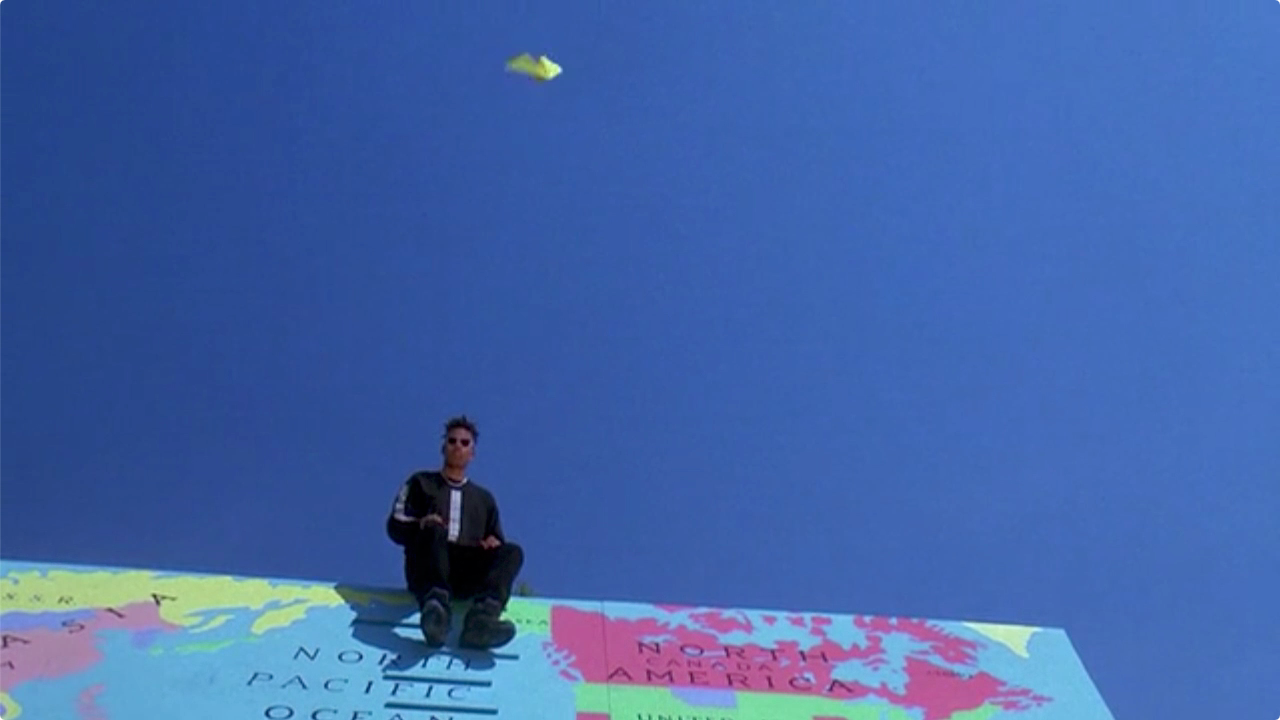- Ironic Sans
- Posts
- The Art Of “Cool As Ice”
The Art Of “Cool As Ice”
Yes, the Vanilla Ice movie. Yes, seriously.

In the fall of 1991, I saw Cool As Ice in a movie theater. I don’t know why. I wasn’t a Vanilla Ice fan. But my friends wanted to see it, so I went along.
It was terrible. It has a Rotten Tomatoes score of 6%. It earned just $1.2 million at the box office, and cost $6 million to make.
But it was gorgeous to look at. As we left the theater, I said to my friends, “That movie should be nominated for an Oscar for Best Cinematography. But it was so awful that I’m sure it won’t even be considered.”
Okay, what I actually said was that it should be nominated for Best Director. But that was before I understood the role of a Cinematographer, which is really what I meant. In a general sense, the Director has the overall creative vision of a project, but it’s the Cinematographer who — collaboratively and to support the Director’s vision — determines the framing of a shot, the lighting, what lens to use, the film stock, the camera movement, etc. The Cinematographer is also called the Director of Photography.
Sure enough, the movie wasn’t nominated for any Oscars. But it did win a Razzy for Vanilla Ice as Worst New Star.
Years later, I started my career as a photographer, and several years after that transitioned to short-form filmmaking. In that capacity I wear several hats as Producer, Director, and frequently Cinematographer. And I sometimes think back to the cinematography of Cool As Ice.
One day I decided to find out whatever happened to whoever made that movie. So I looked it up. And my jaw dropped.
The Cinematographer was Janusz Kamiński. Two years after this movie, he won his first Oscar for filming Schindler’s List. He continued working with Stephen Spielberg, filming Saving Private Ryan (his second Oscar), The Lost World, Minority Report, A.I., War of the Worlds, Munich, Amistad, Lincoln, The Post, the upcoming West Side Story remake and more.
So I decided to take another look at Cool As Ice.
What follows are 12 selected shots from the movie that are more beautiful than the film deserves. Then I’ll be back with more words.












If you saw those without knowing where they came from, what kind of movie would you guess this is?
I chose those from 130 screenshots. I could write entire essays about the overhead shots of beds, sleep as a motif, low-angle establishing shots, leading lines, forgivable use of dutch angles, use of color, and various treatments of watching TV throughout the movie. Cool As Ice is both a 1990s time capsule and a cinematographic treasure trove.
There’s a lot of great camera movement, too. Take for example, this shot that goes from tight to wide, adding characters to the scene as it goes:

Here’s how that camera move ends: a strong composition of five people from the foreground to the background.

Or look at this dolly-zoom on a tape player. It’s a dolly-zoom. On a tape player!

(It’s a Sony Sport CFM-101 Cassette-Corder with the logo removed)
And check out this clever use of a practical light. In this scene, the goons have kidnapped the love interest’s brother (don’t ask). But we don’t even know that he’s in the shot until a flashlight reveals that he’s been in the scene the whole time, hidden in the dark:

You get the idea. Here’s what you should take away from all this:
We all need to start from somewhere.
Even a terrible project can be a good place to practice your craft, so make the most of every opportunity.
You can’t always be creative alone. Sometimes you have to stop, collaborate, and listen.
Now go make some art, art, baby!
Stop Motion Masks
Speaking of doing new things: I made a video using stop motion for the first time. It’s a get-out-the-vote video that took 140 masks. Here’s a snippet:

Okay, One More “Cool As Ice” Thing
You ever notice that nighttime scenes in movies always have wet streets, even if it hasn’t been raining? It’s because wet streets look better than dry streets on camera. But what absolutely tickles me is that this movie includes a shot that explains why the streets are wet. We see a water truck spraying the streets as the love interest walks home (creating a nice moment where the water stops spraying as the truck passes):

If you enjoyed this post, please subscribe to the newsletter to get more stories you didn’t know you wanted to read.
See you next week. And if you haven’t already: vote!
David
Reply